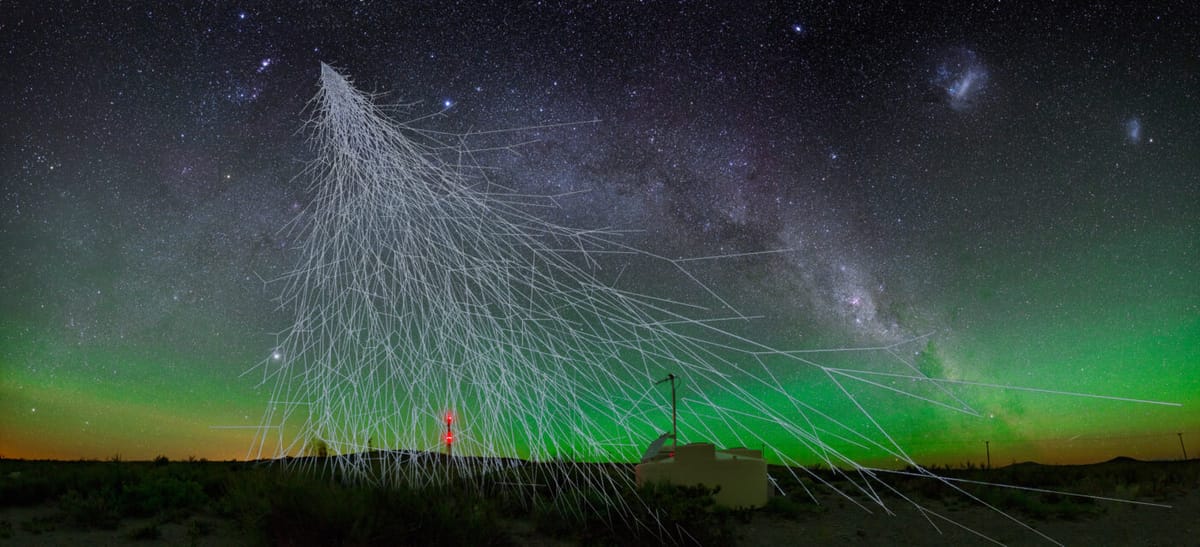China Activates World's Largest Underground Neutrino Detector After Decade-Long Construction
After ten years of construction buried deep beneath a mountain in southern China, the Jiangmen Underground Neutrino Observatory (JUNO) has officially begun operations, positioning China at the forefront of particle physics research and potentially unlocking mysteries about the universe's fundamental structure.
The massive scientific instrument, located 700 meters underground in Guangdong province, represents one of the most ambitious physics experiments ever undertaken. With its activation in late 2024, JUNO joins an elite group of neutrino detection facilities worldwide, but with capabilities that dwarf its predecessors in both size and sensitivity.
A Decade in the Making
Construction of JUNO began in 2014, requiring the excavation of enormous underground caverns and the installation of incredibly precise detection equipment. The facility's centerpiece is a 35.4-meter diameter acrylic sphere containing 20,000 tons of liquid scintillator, surrounded by approximately 17,600 photomultiplier tubes—the largest array of its kind ever assembled.
The detector's location wasn't chosen by accident. Situated between two nuclear power plants—Taishan and Yangjiang—JUNO is perfectly positioned to capture neutrinos produced by nuclear reactors, while the mountain above provides natural shielding from cosmic radiation that could interfere with measurements.
The Neutrino Challenge
Neutrinos are among the most elusive particles in the universe, often called "ghost particles" because they rarely interact with matter. Trillions pass through your body every second without you noticing. This property makes them incredibly difficult to detect but also valuable for understanding fundamental physics.
"Neutrinos hold the key to some of the biggest questions in physics," explains Dr. Wang Yifang, the project's spokesperson. "By studying them, we hope to understand why there's more matter than antimatter in the universe and potentially discover new physics beyond the Standard Model."
Breaking New Ground in Physics Research
JUNO's primary mission focuses on determining the "neutrino mass hierarchy"—essentially figuring out which of the three known types of neutrinos is heaviest. This seemingly technical question has profound implications for our understanding of the universe's evolution and the fundamental laws of physics.
The detector's unprecedented precision comes from its massive size and advanced technology. While previous neutrino detectors might capture dozens of neutrino interactions per day, JUNO expects to record thousands, providing the statistical power needed for groundbreaking discoveries.
The facility also represents a significant technological achievement. The photomultiplier tubes must detect individual photons of light produced when neutrinos interact with the liquid scintillator, requiring precision engineering and quality control that pushed manufacturing capabilities to their limits.
Global Implications and Competition
JUNO's activation intensifies international competition in particle physics research. The United States operates the Deep Underground Neutrino Experiment (DUNE) in South Dakota, while Japan's Super-Kamiokande detector has made numerous discoveries since the 1990s. However, JUNO's design specifically optimizes it for reactor neutrino studies, giving China a unique advantage in this research area.
The project involves over 700 scientists from 75 institutions across 17 countries, demonstrating how major scientific advances increasingly require international collaboration even as nations compete for research leadership.
Beyond Scientific Discovery
The implications extend beyond pure science. Neutrino detection technology has potential applications in nuclear security, allowing monitoring of nuclear reactors from a distance—a capability with obvious geopolitical significance. The advanced materials and precision engineering required for JUNO also drive technological innovations with broader applications.
The project has already generated significant economic activity in Guangdong province, creating jobs and attracting high-tech industries to the region. The facility itself becomes a destination for scientific tourism and international conferences, further boosting the local economy.
Looking Toward the Future
JUNO represents more than just another scientific instrument—it symbolizes China's growing ambitions in fundamental research. The country has invested heavily in particle physics, astronomy, and other basic sciences, viewing them as essential for long-term technological leadership and national prestige.
As JUNO begins collecting data, the global physics community awaits results that could reshape our understanding of the universe. Whether confirming existing theories or revealing unexpected phenomena, the detector's findings will influence physics research for decades to come.
The activation of JUNO marks a new chapter in humanity's quest to understand the fundamental nature of reality, with China now playing a leading role in writing that story.

